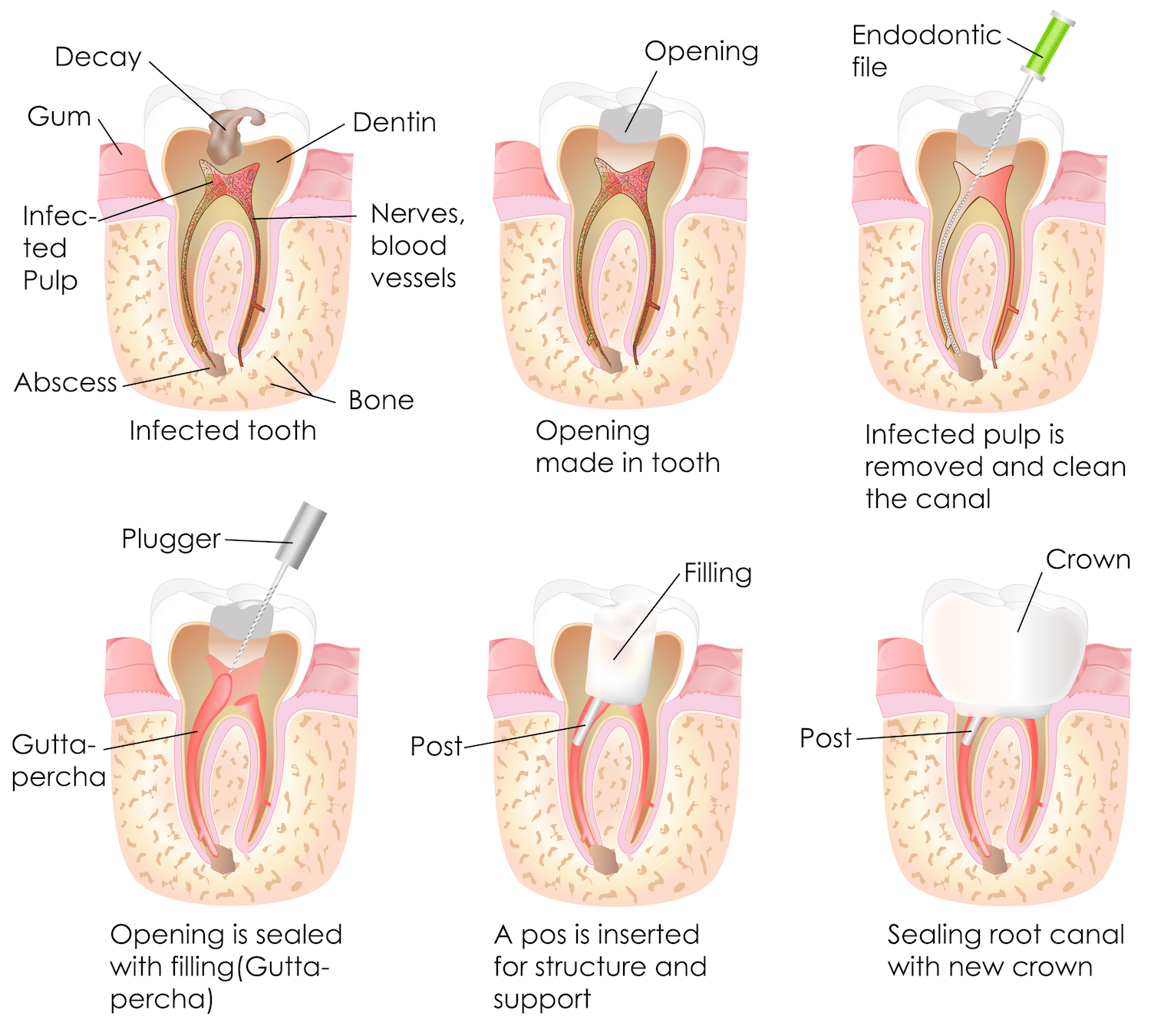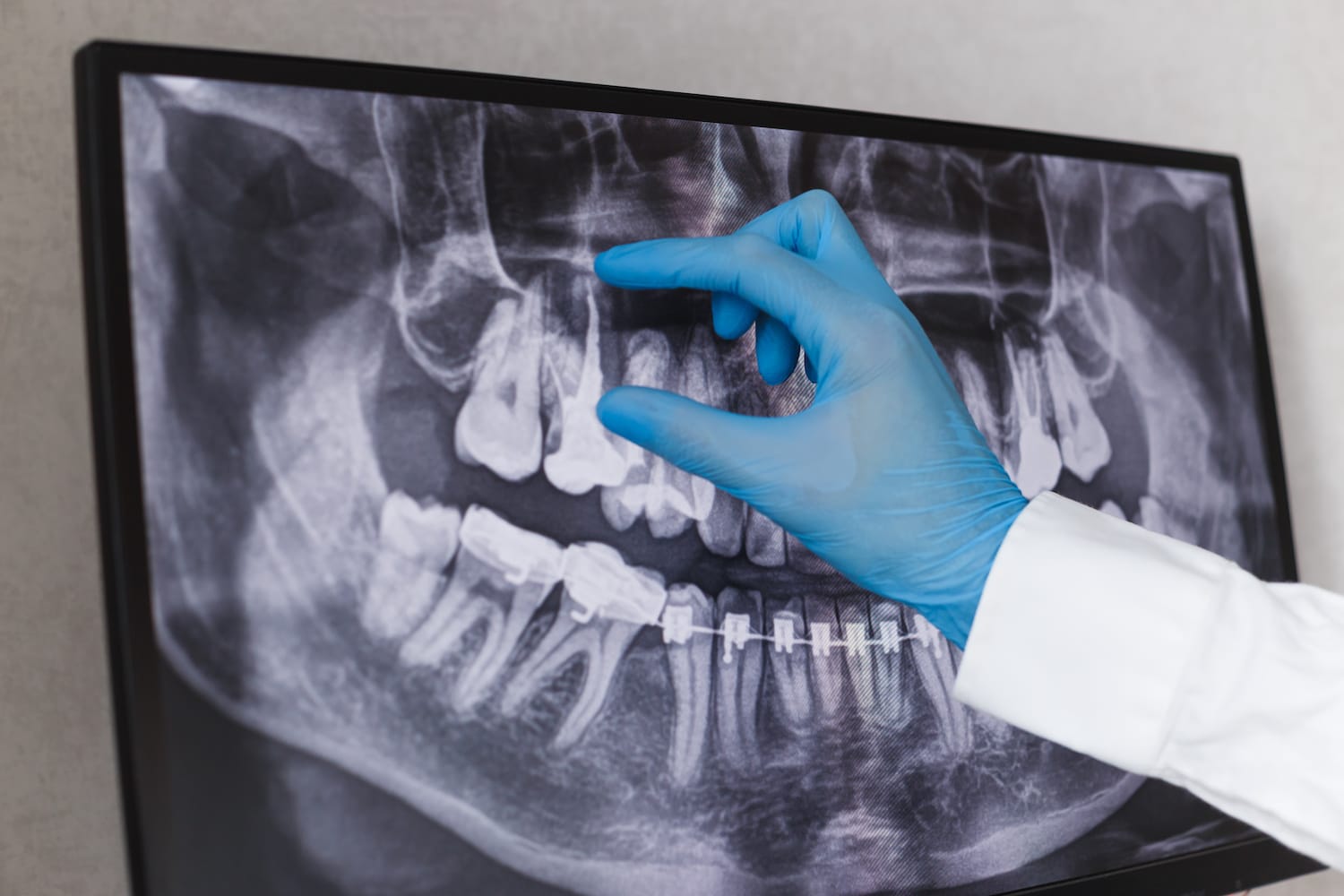If you have been told that you are in need of a root canal, you’ve come to the right place. This article will tell you everything you need to know when it comes to the root canal process and what you can do to prepare for yours.
You will learn things like what a root canal is, what the procedure is like, how to know if you need a root canal, and more. Hopefully, you can find all the information you are looking for, and with that, here is how to prepare for a root canal.
What is a Root Canal?
A root canal is a procedure that is done to preserve a dead tooth. When you need a root canal, it is already infected and dying. It is too late for you to save the tooth’s life. So why get a root canal if it doesn’t save the life of the tooth? You do this because you want to keep the tooth in your mouth and not replace it with an implant.  It is easier to keep your old tooth with the root canal process because you are still able to benefit from having it for speaking and chewing purposes without having to adjust. However, there are consequences. A root canal can make the tooth more vulnerable to fracturing, as the inside of the tooth has been scraped out and only has the outer shell of the tooth. This is why a root canal procedure is usually followed by a crown, which is what preserves the hollowed-out tooth and prevents it from breaking.
It is easier to keep your old tooth with the root canal process because you are still able to benefit from having it for speaking and chewing purposes without having to adjust. However, there are consequences. A root canal can make the tooth more vulnerable to fracturing, as the inside of the tooth has been scraped out and only has the outer shell of the tooth. This is why a root canal procedure is usually followed by a crown, which is what preserves the hollowed-out tooth and prevents it from breaking.
How to Prepare for a Root Canal: Be Aware of These!
- Ask your dentist any questions you may have
- Avoid alcohol/tobacco 24 hours prior to your appointment
- Get a good nights sleep
- Eat a small meal a few hours before the procedure
- Keep pain relievers on hand
- After the procedure eat soft, cool foods to keep irritation and swelling down
- Take it easy for the following 48 hours
What is the Procedure Like?
When the time comes for the procedure, you will sit with your mouth wide open for the length of the project. This can be tough for a lot of people, as your jaw can get pretty tired. Your dentist will begin the procedure and remove anything inflamed or infected and clean out the inside of your tooth.
They will then fill in and seal the space so it does not get infected. After that process is done, you will then come back to receive a crown that is placed on the tooth in order to protect it. This way you are able to chew with it like the rest of your teeth and it will work just like it used to.
What Are Signs To Know if a Root Canal is Needed?
It can be tough to know if you need a root canal when you don’t know the signs. Some things to pay attention to are the following:
Lingering pain: Knowing how your tooth responds to hot and cold is something you should pay attention to. If you eat or drink something cold like ice water, do you have sensitivity in the tooth? And if so, how long does it last? This is the way you can figure out if the pain you have is lingering, meaning it stays for a while, or if it’s just temporary. If you do have a sensitivity that lasts for more than an hour, the pulp inside the tooth may be infected and the nerve is likely dead.
Positional pain: When you are in a certain position, does your pain get worse? If so, it could mean that you have a swollen tissue, and possibly a dead tooth.
Fistula on the gum: A fistula is a pimple looking substance on your gums indicating that there is a sign of infection because of pus, blood, and other things trying to break out. However, just because it is located by a certain tooth, it does not mean that the tooth is the one that is infected.
Abscess: This is usually something that is found on an x-ray. It usually appears in the x-ray as a dark spot because the bone does not want to grow in that certain area. With all the dead tissue coming from the inside of the tooth from infection, it causes bone not to grow in that area.
Spontaneous pain: If you are just lounging around and relaxing and all of a sudden a large amount of pain hits, you probably have a dead tooth, as this is not something that should happen in a healthy tooth.
What is the Procedure Like and Does it Hurt?
A root canal is something that requires one, and sometimes multiple visits that are performed by a dentist, as well as an endodontist. An endodontist is a dentist that specializes in the treatment of diseases and where they come from. The type of dentist that you use will depend on how difficult the root canal is and the comfort level of your dentist who will work on the tooth and will then possibly discuss a better option for your procedure.
The procedure starts with an x-ray that will show you the shape of the root canals and show if there is an infection in the bone surrounding the pain.

You will then have anesthesia to numb the pain around the tooth. Sometimes, anesthesia will not be necessary because of a dead nerve, but most dentists will use anesthesia to keep the patient at ease and more comfortable. To make sure your tooth is dry, you will have a rubber dam that is placed around your tooth that will block out your saliva.
There will then be a hole drilled into the tooth that gives the dentist access to remove the bacteria and nerve tissue from the tooth. The cleaning process is then done using root canal files. These are a series of files that progressively increase in size and are placed into the access point to scrape the sides of the root canals.
After the tooth is cleaned out, a seal is put on. The timing of the seal is different and depends on your individual case. If you have an infection and need something put onto the tooth to clear it up, then it may take a week before you get it sealed. If everything is looking good and ready, then it can be sealed that same day it’s cleaned out.
If a root canal is not completed on the same day as the procedure, there is a temporary filling placed in the hole of the tooth. This is to keep out anything that could contaminate the tooth such as food and saliva. Your next appointment will be to fill the inside of the tooth. You will have a sealer paste that is filled into the tooth’s root canal and is capped with a filling placed where the hole was.
Often times with a root canal, the tooth that needs it has excessive decay and needs to be fixed in order to protect it and have it be fully functional again. Any work done after this will be discussed with you by your dentist. A root canal procedure has a reputation for being a painful process. This is not always the case though, as a majority of people say that they would compare it to having a filling put in. So if the scary stories of a root canal are what’s holding you back, you have nothing to worry about.
Complications of a Root Canal
Sometimes, a root canal does not always work out perfectly. There may be new infections that take place during the process of one because of things like an undetected cracked tooth, bacteria getting past the restoration, or the breaking down of the sealing material over time allowing the bacteria to get back inside of the inner part of the tooth. The retreatment of the tooth is something that can be done successfully, however, this is not always the case and may need to be an endodontic surgery in order to save the tooth. During this procedure, your gum tissue is opened and the infected tissue is removed relieving inflammation and the infection.
Root Canal Alternatives
If possible, it is always best to save your natural teeth. This way you do not need to make any adjustments with your speaking or chewing. The alternative to a root canal procedure is to have the tooth removed and replaced by a bridge, implant, or a partial denture. These procedures are more expensive and need additional procedures on surrounding teeth and tissue.
How to Avoid Getting a Root Canal
There are many ways to preemptively avoid a full root canal. By following good oral hygiene practices such as brushing twice a day, flossing, and scheduling regular dental visits, you can reduce the need for a root canal procedure. Some other ones to keep in mind would be:
- Avoiding hard foods such as lollipops & other hard candies
- Don’t excessively chew ice after drinking your beverage
- Avoiding acidic drinks such as sodas and citrus juices
- Get tooth pain examined immediately!
Hopefully, this post gives you a good idea of what happens during a root canal procedure, and what you can do to prepare for it. If you are in need of a root canal or just basic cleaning, Wayzata Dental has you covered. Reach out and schedule your next visit, we look forward to having you!



